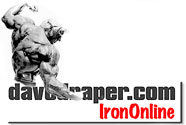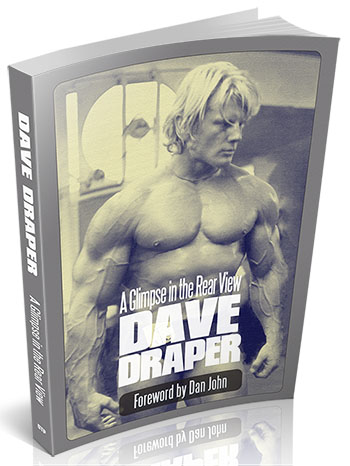HIT and Heavy Duty Training
A
Brief Primer on High Intensity Training
Page 3 of 4
Written By Steve Wedan
Mike Mentzer was one who followed Arthur Jones's lead early on (do we see a 'Jonesian' pattern here?), and went on to begin an enterprise based on his version of it. He called it Heavy Duty and built the business on a combination of science and his own success in strength building and on the international posing dais. I was one of those who believe he should have won both the 1979 and 1980 Mr. Olympia, but the fact is he didn't. His loss to Arnold in the latter contest drove Mike into a self-imposed exile, and after a while he drifted into obscurity.
He came back a few years later, with the fire newly burning in his belly to get the word out about HIT training. This time, however, he built much of it on a base of philosophy, an interest he always seemed to exhibit. A careful reading of the new editions of his booklets reveals that the main reason he wants bodybuilders to understand the basics of Objectivism is to grasp that reason is the way humans make proper decisions. While animals perceive and then follow instinct to dictate behavior, humans perceive and then mentally conceive. In other words, lacking instinct, we operate by observing the world and formulating concepts as to how it operates and how we achieve whatever ends we desire.
Mike then goes on to insist that the biomechanics of muscular growth are perceivable. Thus, they can be exploited by following a logical course of behavior. This course is to take a certain, limited number of exercises and work them to utter failure, and to do so only often enough to stimulate growth but not to exhaust one's recovery ability.
In the 1990s, with the perspective lent by a thriving personal training business, Mike got a deeper insight than he previously had had on the variation of individuals' recovery ability. Since 1980, it had been my experience that following Jones's, Darden's, or Mentzer's published routines as hard as they were advocating, I would overtrain, get ill and lethargic, and eventually quit. Genetic marvels like Mike himself could get along and make progress doing more of that hard work.
When Mike began to understand the wide range of recovery ability different people possess based on the frustrating experience of a particular client of his, he reduced the man's training to the point at which he began gaining again. And that workload volume was small, indeed. To look at the routine on paper would cause most bodybuilders to scratch their heads and wonder how anyone could gain on so little total work.
In Mike's Heavy Duty II, he outlines two routines, and the second one is a true abbreviated routine. But the exercises are big, multi-joint moves that stimulate a lot of muscle growth.
The main problem people have with Mentzer is his insistence that his way is the only way. It comes off as arrogant. On the other hand, a man with such strength of his convictions, I think, has a lot to teach. And one of the main things Mike teaches is this: Variation among people lies mainly in their ability to withstand volume of exercise, not in the mechanisms for building muscle. Some people are able to thrive on many times the amount of work that others can, and the smartest thing a trainee can do is not to copy what someone else does in the gym, but it is to find out what his own tolerance is to exercise is. Find that, and work within it on a consistent basis, and you've got your best formula for success.
There is room for consideration even there, though, and this brings us to Stuart McRobert. Stuart spent years punishing his body in an attempt to build it the way Jones and the rest advocated. He wrote articles for years in the old Iron Man about how to do it, and reading them shows you how he really believed in that approach. He believed in classic HIT with a passion, the passion of the small man who would be large.
But Stuart came to the same sea-change I did years ago. Mine came about when I was talking with Ellington Darden on the phone, and he said that there are two cardinal rules for building muscle: Progress and Overload. I thought about that for months before daring to believe what I had been suspecting for a long time. And that is this: As long as I am progressing, the overload will take care of itself. Logically, I cannot continue progressing without overloading eventually.
So, focus on progression.
Stuart came to the same conclusion a little earlier than I did, but from a similar frustration from lack of progress. He began to embrace the old lifting cycles followed decades ago by very strong men in dungeon-like gyms and garages all over the world. That approach was as follows: Start at roughly 85% (don't compulsively work this out on paper, just estimate it) of what you can lift for a certain number of reps, and add poundage each week until you equal what you were able to do before; if done with patience, you should end the cycle able to lift more weight for the same reps. When progress slows, cycle back to a new poundage that represents approximately 85% of your limit (for the chosen number of reps) and work on it again.
Click here to go to page four of the HIT primer
Steve
Wedan is an artist and writer. He also is a contributor
to the IOL Forum.
You can see and order his new print of Dave by clicking on this link.
Click here if you missed Steve's article on Arthur Jones and Casey Viator

